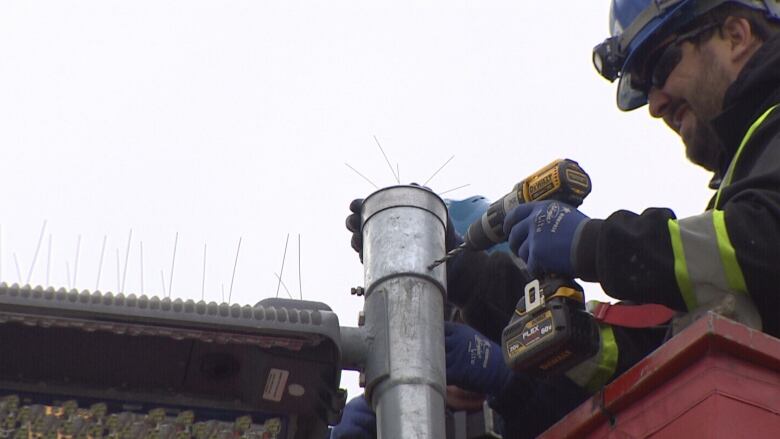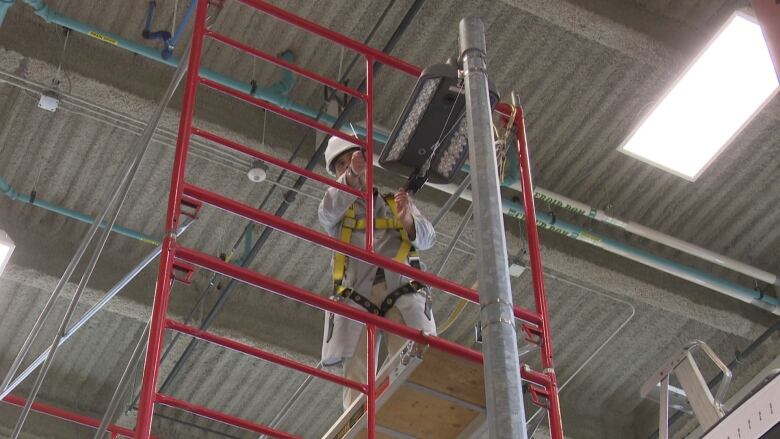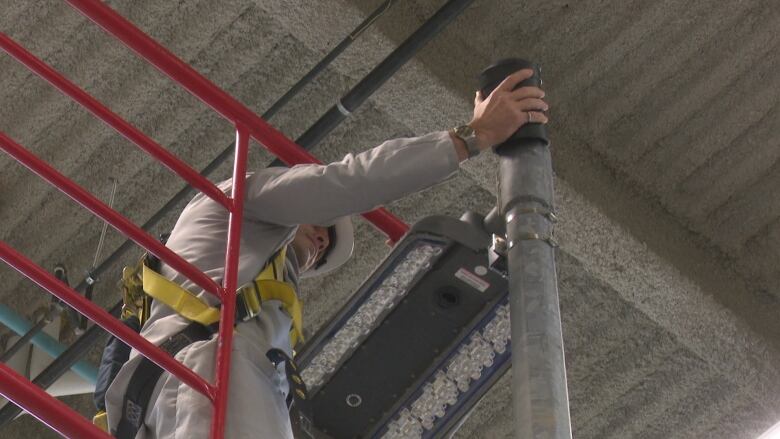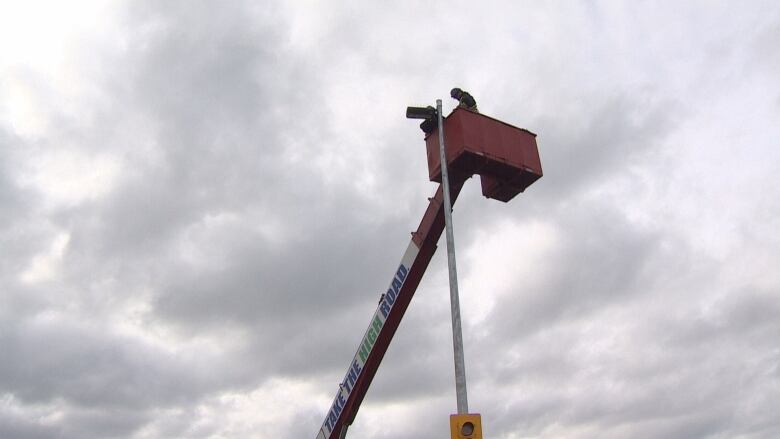Confederation Bridge adapts lamp posts to stop swaying, shearing off
Metal box containing weighted balls to be installed on top of all 310 lights

The lamp posts on the Confederation Bridge will soon have some extra weight on top, after concerns about poles being sheared away in high winds in 2015 and 2016.
- Light poles removed from Confederation Bridge due to weather
- More damaged light poles found on Confederation Bridge
"In a very strong wind event we're talking gusts over 150 kilometres per hour we noticed that the top of the pole was swaying significantly," said Michel LeChasseur, general manager of Strait Crossing Bridge Limited, the company that operates and maintains the bridge."That was something we had never noticed before in 20 years of operation."

In 2016, twenty light poles were replaced after onefixture was ripped from its base by extreme winds, falling onto the bridge.
In 2015, high winds caused eleven lights to break off the structure.
"It was a northwest wind. They all fell on the other side in the strait and we never found them," LeChasseur said.
"Nobody reported them, they probably went with the ice in the spring."
Looking for answers
After the first poles were ripped off the bridge, LeChasseur turned to researchers at the University of Moncton for help with the problem.
The first question, he said, was whether the poles were suffering from wear and tear, and potential metal fatigue from being exposed to the elements on the massive structure above the Northumberland Strait.
"We started with that, are they fatigued?" said LeChasseur."The answer coming back from the chemists and the scientists is no, it is not fatigue."

When it happened again in 2016, he went back to the research team to take a closer look at the LED light poles that had been installed in 2011.
"The light fixture is different than the previous model that was there from '97," said LeChasseur.
"It's lighter than the previous one, it's more aerodynamic than the previous one, this seems like all good stuff but let's put it to the test."
A potential solution
In the research lab, the scientists came up with a potential solution: dampeners to reduce the sway of the poles.
The dampener is a metal box containing two weighted balls.

"It kills the momentum, kills the motion so it stays more steady," explained LeChasseur.
"Instead of swaying tremendously, it will sway less, the more you sway, the more risk that something will break."
310 lights
The process of installing the dampeners is underway now, as winds permit. Crews in bucket trucks install the boxes on top of the light posts.

Strait Crossing is manufacturing the dampeners, which will cost about $15,000 for 310 lights, not including the months of research.
The company will be monitoring the new dampeners and their effect on the light posts carefully over the winter.

"Every time there's a wind event we'll be out there, checking what's going on," he said.
"Does it solve everything? The answer is it doesn't,because the problem is not the pole and the fixture, the problem is the wind."
- MORE P.E.I. NEWS |It pays to live on an island: N.L., P.E.I. least stressed provinces
- MORE P.E.I. NEWS |Grandparents on P.E.I. to get $700 a month for children in their care












_(720p).jpg)


 OFFICIAL HD MUSIC VIDEO.jpg)
.jpg)



























































































